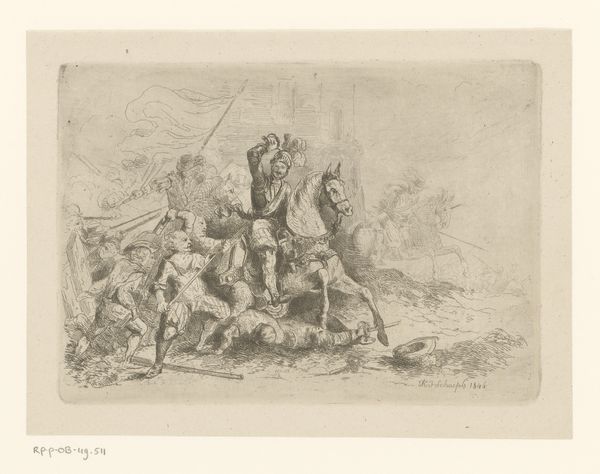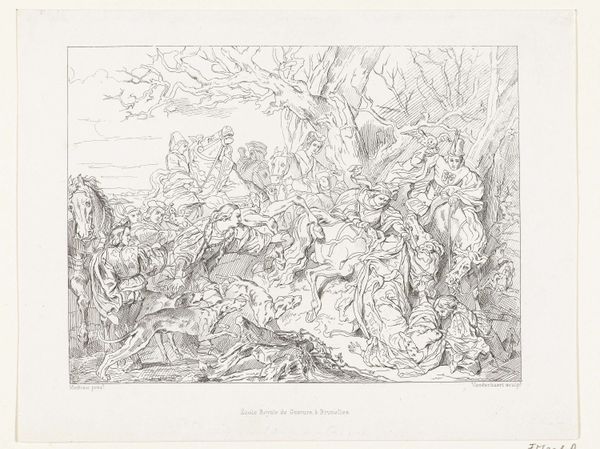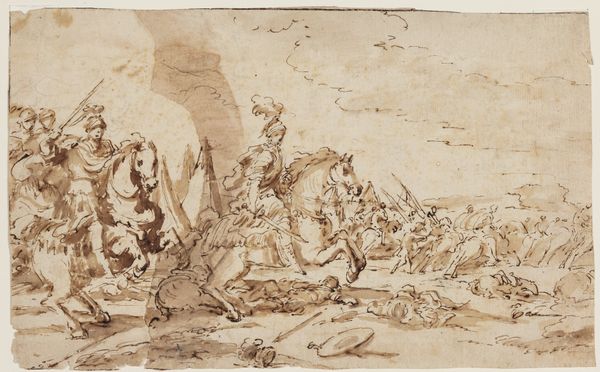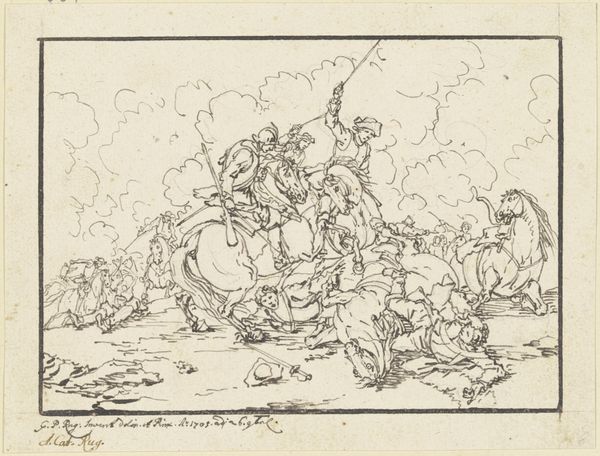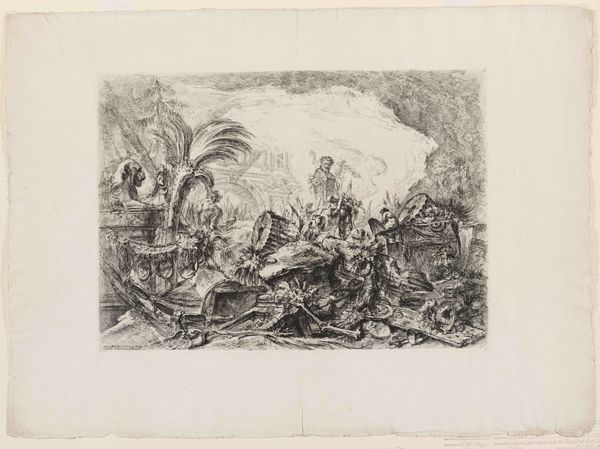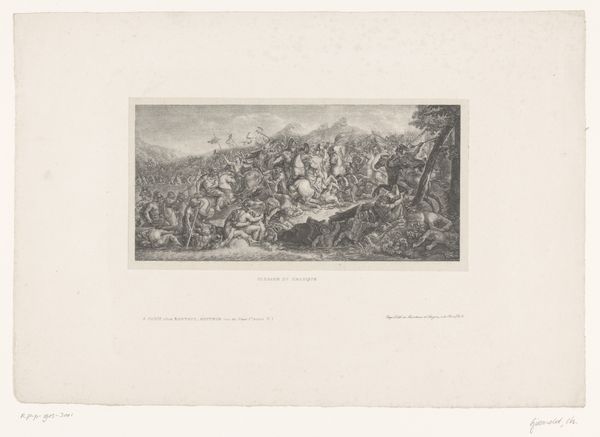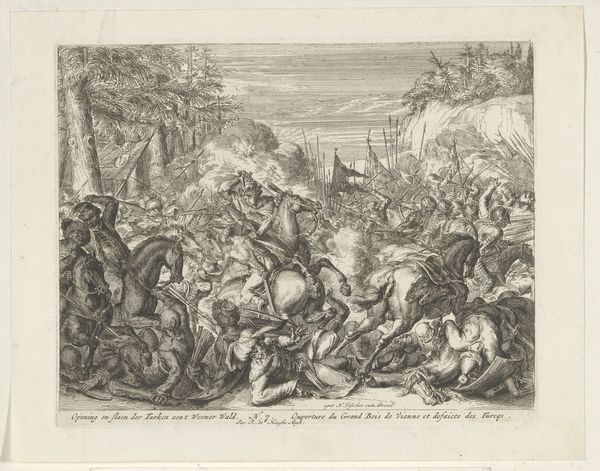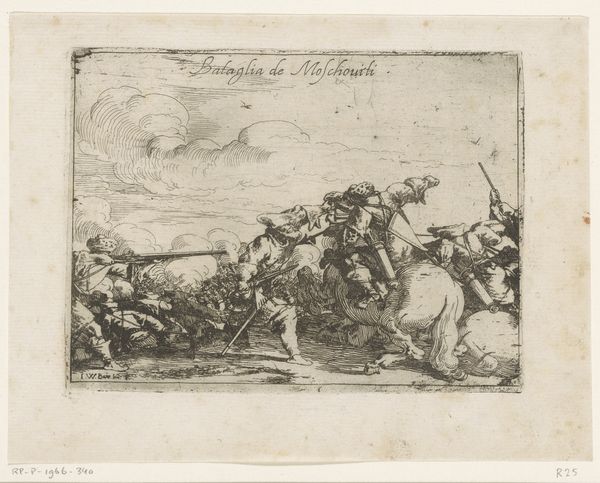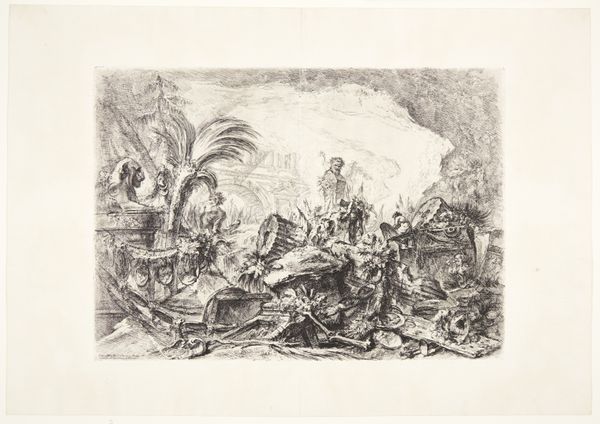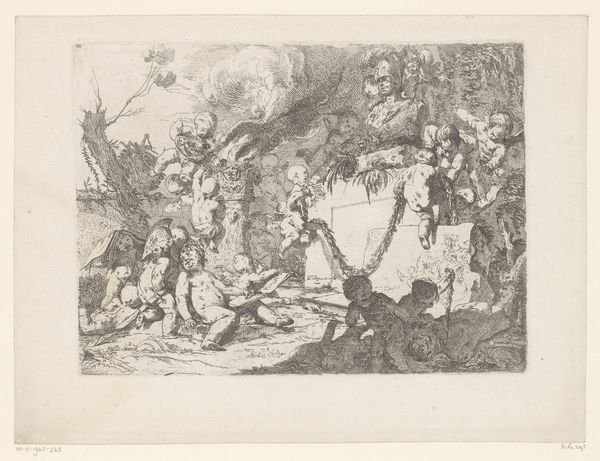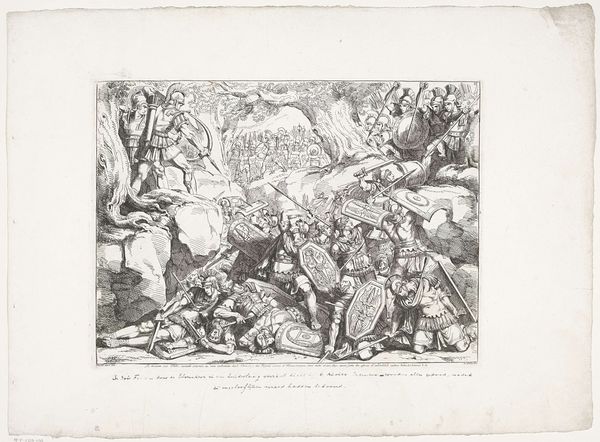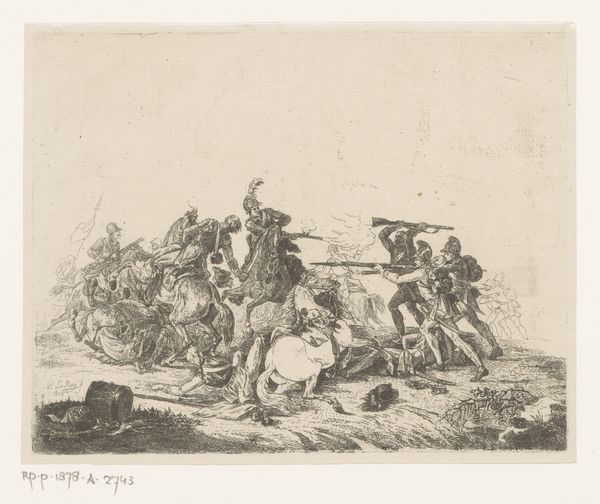
drawing, engraving
#
drawing
#
narrative-art
#
pen illustration
#
pen sketch
#
figuration
#
personal sketchbook
#
sketchwork
#
ink drawing experimentation
#
romanticism
#
pen-ink sketch
#
line
#
pen work
#
sketchbook drawing
#
history-painting
#
storyboard and sketchbook work
#
sketchbook art
#
engraving
Dimensions: height 134 mm, width 170 mm
Copyright: Rijks Museum: Open Domain
Curator: Look at this frenetic energy! "Guldensporenslag, 1302" rendered in engraving, created sometime between 1800 and 1846 by Henri Van der Haert. It pulsates with the raw chaos of battle. What’s your first impression? Editor: Overwhelming. A tangle of bodies, weapons, and limbs sketched with fine lines creating a feeling of claustrophobia. It's a very Romantic interpretation of violence. Are we meant to glorify this battle? Curator: The Battle of the Golden Spurs. Consider the weight that specific imagery, those golden spurs, carry through history. A symbol of victory for the Flemish, yet also, arguably, a brutal clash of identities and allegiances. The Romantic era was keen to idealize or demonize pivotal historical moments, so we have Van der Haert interpreting it here, perhaps drawing on existing Flemish myths of resistance. Editor: Absolutely, and romanticizing conflict almost always conveniently erases the experiences of the common folk caught in the middle, right? Note how those figures are almost indistinct, lost in the grand narrative of clashing knights and their gleaming symbols. It's a very top-down approach. Who are we centered in the conflict and why? Curator: Van der Haert seems preoccupied with conveying the visceral energy. The sketchwork, with its multitude of hatching lines, really does impart a nervous energy. Each stroke appears imbued with urgency; the symbolic importance comes from the sheer spectacle of it all. It's interesting, isn't it, that it uses a line and an emphasis that can still touch the viewer to this day. Editor: Though that kind of formal technique has also historically been used to veil political statements with superficial aesthetics. I think the way that we tend to extract pleasure or historical value from it becomes more problematic than it first appears to be. We can see how easily this piece reinforces nationalism under the guise of artistic merit or 'accurate' historical documentation. Curator: Your reading is astute and speaks volumes about the lingering impact such works hold. Thinking through the psychological weight of collective identity projected through singular works helps better understand our world today. Editor: Precisely, understanding that is vital for engaging critically with both the artwork and the power structures that often inform our perceptions. Thank you.
Comments
No comments
Be the first to comment and join the conversation on the ultimate creative platform.
